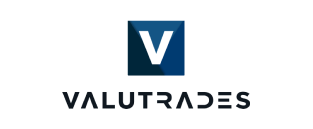In the dynamic landscape of the UK financial services sector, regulated by the Financial Conduct Authority (FCA), the importance of rigorous internal policy attestations cannot be overstated. These attestations serve as a vital checkpoint, ensuring that employees not only comply with internal policies but also adhere to the broader regulatory frameworks set by the FCA. This article explores the traditional manual approaches to internal policy attestations and juxtaposes them with modern, technology-driven solutions, underlining the advantages and limitations of each.
Traditional Manual Approaches to Internal Policy Attestations
Historically, the process of internal policy attestations in financial firms has been manually driven. This approach typically involves a series of steps, including the distribution of policy documents, physical or electronic acknowledgment by employees, and subsequent record-keeping. The primary advantage of this approach lies in its simplicity and directness. Employees receive the policies, understand them, and attest their compliance by signing off.
However, manual approaches present significant challenges, particularly in scalability and traceability. As firms grow and regulations become more complex, managing attestations manually becomes increasingly burdensome. The process is time-consuming, prone to human error, and lacks efficient oversight mechanisms. Monitoring compliance and ensuring that all employees have read and understood the policies are ongoing challenges. Moreover, manual methods struggle to provide real-time insights into compliance levels across the organisation.
The Rise of Technological Solutions
In contrast to manual approaches, technological solutions such as My Compliance Centre offer a more streamlined, efficient, and transparent way to manage internal policy attestations. These solutions typically involve the use of specialised software platforms that automate the distribution, acknowledgment, and tracking of policy compliance.
Technology-driven approaches boast several advantages. Firstly, they offer scalability, accommodating the needs of growing firms with ease. Automation reduces the administrative burden, allowing compliance teams to focus on more strategic tasks. Secondly, these platforms offer real-time tracking and reporting capabilities, providing a clear overview of compliance levels and enabling quick identification of areas needing attention. Additionally, digital solutions often come with features like electronic signatures, reminders, and interactive learning tools, enhancing employee engagement and understanding of the policies.
Comparing Manual and Technological Approaches
When comparing manual and technological approaches, several key differences emerge. The manual approach, while straightforward, falls short in terms of efficiency, accuracy, and scalability. In contrast, technological solutions offer a more robust, reliable, and scalable approach to managing attestations.
A significant benefit of technology-driven solutions is their ability to integrate with other systems and processes within the firm. For instance, attestation platforms can be linked with training modules, ensuring that employees not only attest to policies but also receive necessary education on them. This integration fosters a more comprehensive understanding of compliance requirements, which is often lacking in manual processes.
Another advantage of technology in this domain is the ability to customise and update policies swiftly in response to changing regulations. Manual processes, on the other hand, are slower to adapt, posing a risk in the fast-evolving regulatory environment.
Implementation Considerations
Implementing a technology-based attestation program requires careful planning. Firms must select a platform that aligns with their size, complexity, and specific regulatory needs. Training and engaging employees in the new system is crucial to ensure its effective adoption. Additionally, the chosen solution should offer robust data security and privacy features, considering the sensitive nature of compliance data.
Conclusion
In conclusion, while traditional manual approaches to internal policy attestations have their place, the evolving nature of the financial services industry calls for more sophisticated, technology-driven solutions such as My Compliance Centre. These technological approaches offer improved efficiency, accuracy, and scalability, thereby better equipping firms to meet the rigorous compliance demands set by the FCA. As the industry continues to evolve, embracing technology in compliance processes will be key to maintaining robust internal controls and fostering a culture of compliance.












